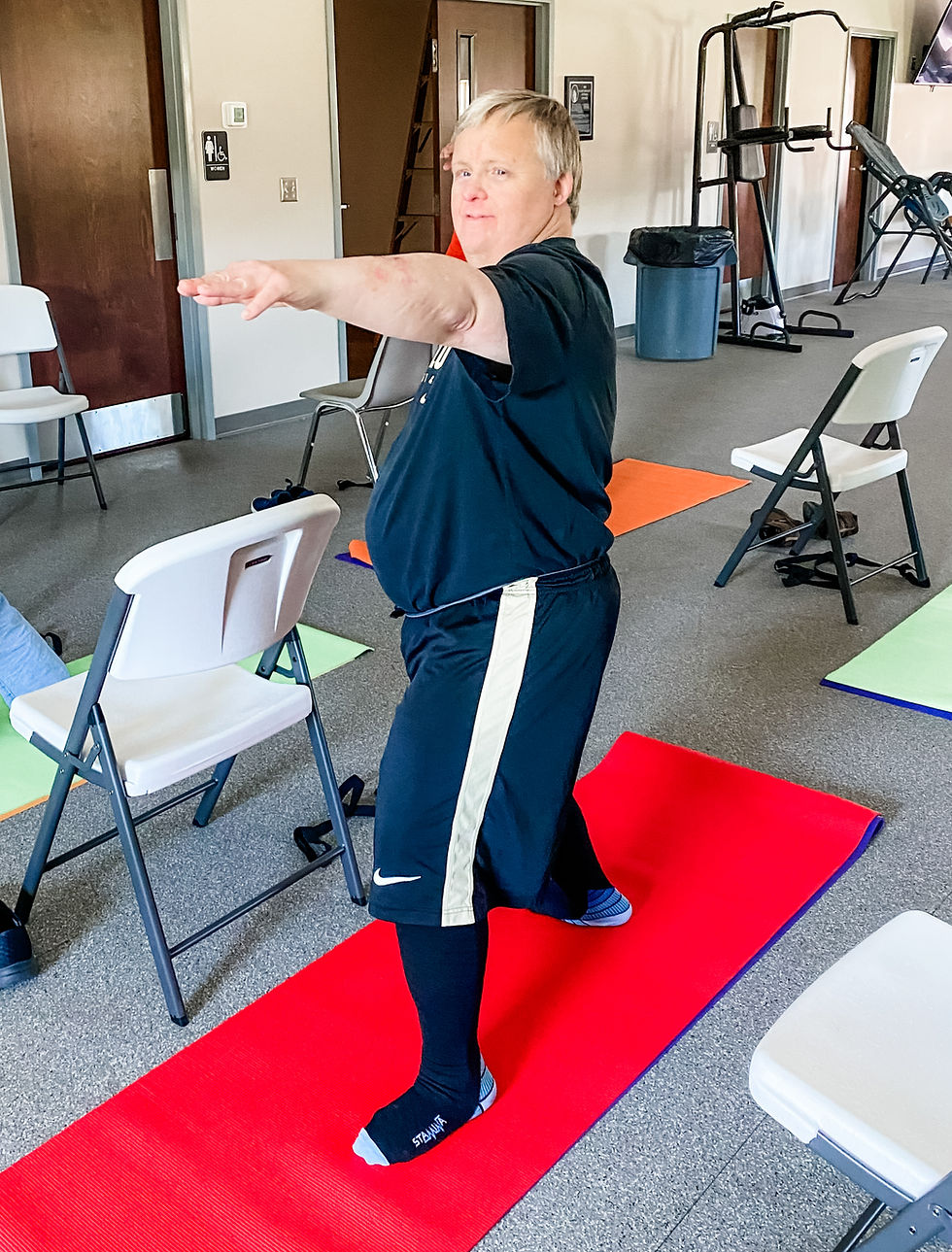Tip for Personal Trainers: Adapting Workouts for Diverse Clients
- YogaFlow and Fitness

- Apr 1
- 4 min read
Personal trainers work with clients from all walks of life, each bringing unique goals, abilities, and challenges to their fitness journey. Adapting workouts for diverse clients is essential to creating safe, effective, and personalized fitness programs. From beginners and advanced athletes to those recovering from injuries, your ability to tailor fitness plans ensures clients feel supported and empowered. In this post, I’ll share practical tips for creating custom workout plans that meet a variety of client needs while helping them achieve their fitness goals.
Conduct a Comprehensive Fitness Assessment
Before designing a tailored fitness program, conduct a detailed assessment to gather key details about your clients:
• Fitness history: Understand their previous workout routines and current activity levels.
• Health conditions and injuries: Identify limitations that may require low-impact exercises or specific modifications.
• Personal goals: Determine whether they aim to lose weight, build strength, improve flexibility, or recover from an injury.
Starting with a thorough consultation ensures you can craft personalized workout plans aligned with their needs and fitness goals.
Adapting Workouts for Different Client Needs
Every client is unique, and their fitness levels, health conditions, and goals influence how you structure their workouts. Some examples include:
• Beginners: Focus on teaching proper form and introducing beginner-friendly workouts. Start with scalable exercises like bodyweight squats and progress gradually.
• Advanced clients: Challenge them with progressive overload techniques, high-intensity interval training, and varied strength-training programs.
• Older adults: Incorporate functional fitness exercises, balance training, and joint-friendly movements to support overall health.
• Injury recovery clients: Adapt exercises by lowering intensity and including alternatives like resistance bands or yoga-inspired stretches.
Understanding these needs allows you to provide safe, effective, and engaging workouts for diverse fitness levels.
Modify Exercises for Client-Specific Abilities
Exercise modifications are a key tool for personal trainers to ensure workouts are accessible and effective. Use these strategies to adapt workouts for all clients:
• Scalable options: For example, offer wall push-ups or knee push-ups for beginners while progressing advanced clients with weighted push-ups.
• Alternative movements: Replace high-impact exercises like burpees with low-impact options such as step-ups for older adults or injury recovery clients.
• Props and tools: Use resistance bands, chairs, or yoga blocks to help clients maintain proper form and confidence during their workouts.
By modifying exercises, you create personalized fitness programs that meet clients where they are while encouraging progress.
Focus on Achieving Individual Client Goals
The most effective fitness programs align with your clients’ unique goals. Tailor your approach based on what they want to achieve:
• Weight loss: Design circuit training and cardio-based routines to burn calories efficiently.
• Strength building: Focus on progressive strength-training exercises that increase muscle endurance and power.
• Flexibility and mobility: Incorporate stretches, yoga poses, and dynamic mobility drills to improve range of motion.
Balancing functional fitness exercises with client-specific goals ensures steady progress and long-term success.
Integrate Mind-Body Practices into Workouts
Adding mind-body techniques like yoga and mindfulness helps enhance flexibility, reduce stress, and promote overall well-being. These practices can complement traditional fitness programs in meaningful ways:
• End sessions with yoga-inspired stretches to improve recovery.
• Teach breathing exercises to enhance focus and relaxation.
• Encourage mindfulness to keep clients engaged and present during workouts.
These elements create a well-rounded fitness experience and help clients achieve both mental and physical benefits.
Leverage Tools and Technology
Technology can make adapting workouts easier and provide valuable insights into client progress. Incorporate these tools into your training process:
• Wearable fitness devices: Track metrics like heart rate, calorie burn, and recovery to personalize workouts further.
• Workout apps: Use apps to create custom plans, monitor achievements, and make real-time adjustments.
• Virtual training platforms: Offer online personal training sessions to expand accessibility for clients who prefer home-based fitness.
By using modern tools, you streamline the training process and keep clients motivated and engaged.
Build Empathy and Strong Communication Skills
Empathy and clear communication are essential for personal trainers to create trust and rapport with clients:
• Understand challenges: Acknowledge and address obstacles like lack of time or confidence with encouragement and solutions.
• Celebrate progress: Provide personalized feedback and highlight achievements, no matter how small.
• Set achievable goals: Work with clients to establish realistic fitness milestones that promote commitment and momentum.
When you build strong relationships, clients are more likely to stay consistent and reach their fitness goals.
Conclusion
Adapting workouts for diverse clients is a core skill for personal trainers looking to deliver safe and effective fitness programs. By conducting thorough fitness assessments, tailoring exercises, and incorporating modern tools, you create personalized plans that help clients succeed. Adding mind-body practices and fostering strong communication skills enhances the overall experience and strengthens relationships with your clients.
Embrace the challenge of working with diverse fitness levels, and you’ll empower clients to achieve their goals while building a rewarding and impactful training career.
📞 Contact Yogaflow and Fitness today!
🌐 Website: www.yogaflowandfitness.com
📍 Proudly serving Chelsea and nearby areas.
📸 Follow me on Instagram: https://www.instagram.com/yogaflowandfitness?igsh=dTltaGR2MDQ1bWE1&utm_source=qr
📘 Like me on Facebook: https://www.facebook.com/sunflowerfityoga?mibextid=LQQJ4d




Living with Parkinson’s disease felt like losing parts of myself, one day at a time. Tremors, stiffness, and constant fatigue made even the simplest tasks exhausting. Medications helped, but the side effects were just as hard to manage.In search of something gentler, I discovered a natural herbal program from NaturePath Herbal Clinic. I didn’t expect a miracle but after a few months, I noticed real changes: reduced tremors, better balance, improved sleep, and renewed energy.What truly amazed me was how easy it was on my body no side effects, just steady, natural progress.Now, nine months in, my condition has stabilized, and I feel stronger and more hopeful. While Parkinson’s hasn’t gone away, I’ve regained a sense of control and quality…